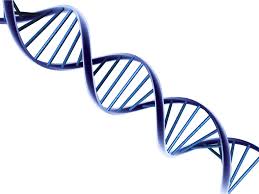You may have noticed that some people respond better to exercise than others. That is, while some are more easily able to lose weight and gain muscle mass, others who do the same type of training are unable to achieve a similar result. In addition, we also see that some people have better performance in endurance sports, for example, and others do better in strength sports and muscle explosion.

This is because human beings are unique and have different characteristics between them that respond in different ways when stimulated. For a better understanding of our body’s responses to physical exercise, it is important to know that there is a principle that guides training in general: biological individuality.

The performance of each person depends on several factors, even if they carry out the same training.
This phenomenon explains the variations between individuals of the same species, which means that there are no identical beings, not even the twin brothers . This means that each organism reacts differently to the same stimulus applied, generating specific adaptations. For example: two friends start running together, following a spreadsheet. At first, the degree of performance is even similar, but after some time one of them takes off, while the other fails to improve its speed.
WHERE DIFFERENCES COME FROM
We can say that the individual is formed by a sum of genetic characteristics , the genotype, with elements that we call phenotype, which makes individuals differentiate. But what are these characteristics?
The genotype are the unique genetic characteristics acquired until birth , responsible for the potential that the body presents in the face of physical effort. They include factors such as body composition, biotype, maximum expected height, maximum possible strength and percentage of muscle fibers of different types.
The phenotype are external influences from birth , responsible for the evolution of the capacities involved in the genotype, including both the development of adaptation effort and sports skills, as well as the extension of the individual’s learning capacity.
Taking this into account, however similar they may seem, each of us has a different genotype and phenotype, so some people respond better to exercise than others.
In addition, there is great individual variation in cell growth, metabolism, cardiovascular, respiratory and endocrine responses.
WHAT INFLUENCE
 The main factors affecting the response to training are:
The main factors affecting the response to training are:
1 – Heredity : First, each individual is born with a predetermined genetic makeup. This can develop positively or negatively within limits with training and physical detraining, respectively.

2 – Conditioning level: The more conditioned, the smaller the relative improvement for the same training program. In other words, if two people, one trained and one sedentary, undergo the same training, the sedentary will demonstrate greater relative progress.

3- Responded and unresponsive individuals: The response of a training program depends on genetics and also, of course, on the daily diet. Therefore, there are very responsive individuals (great progress) and little responsive (little or no progress) among groups of people who follow the same training program.
These influences may explain why some people demonstrate great progress after having completed a certain program and others take a little longer to achieve the desired results or even to obtain no changes after having completed the same program.
Everyone should not be expected to exhibit exactly the same degree of progress and in the same amount of time. So don’t compare yourself to anyone, we are unique beings with our individualities and limitations.
It is important to understand that physical exercise goes beyond aesthetic results . So doesn’t mean that if you don’t get results from physical activity, you’re better off lying on the couch. A training regime can trigger beneficial reactions to your particular genome and physiology . There are adaptations and improvements that are not visible in the body, and these are the most beneficial and long lasting.
